Are you looking to elevate your brand's visibility and engagement through a comprehensive marketing strategy? In today's fast-paced digital landscape, integrating various channels can create a powerful synergy that drives results. This letter outlines a proposed integrated marketing strategy that aims to align your efforts, ensuring every message resonates with your target audience. Read on to discover how we can collaborate for success!

Executive Summary
Integrated marketing strategies encompass a comprehensive approach for maximizing brand exposure across various channels, such as digital platforms and traditional advertising. This strategy often targets specific audience segments by utilizing data analytics, enabling tailored messaging that resonates. In 2023, an emphasis on social media platforms, including Instagram and TikTok, has shown significant engagement with millennials and Gen Z, leading to increased conversions. Additionally, incorporating email marketing campaigns that leverage A/B testing can enhance open rates by approximately 25% when comparing subject lines and content formats. The overall objective of this proposal is to synchronize various marketing efforts to create a cohesive brand narrative, ultimately driving higher customer retention and boosting overall sales performance.
Objectives and Key Results (OKRs)
An integrated marketing strategy proposal focuses on setting clear Objectives and Key Results (OKRs) to drive measurable growth. Specific objectives may include increasing brand awareness by 30% within six months through multi-channel campaigns, enhancing customer engagement by achieving a 25% increase in interactions across social media platforms like Instagram and Facebook, and boosting conversion rates by 15% through targeted email marketing initiatives. Key results should encompass precise metrics such as attracting 10,000 new followers, achieving a 20% open rate on email campaigns, and generating 5,000 leads from digital advertising efforts. Aligned across departments, this strategy ensures cohesive execution and fosters accountability in achieving collective goals.
Audience Analysis
Audience analysis plays a crucial role in the development of an integrated marketing strategy, focusing on the characteristics, preferences, and behaviors of target demographics. For example, Millennial consumers, aged 25-40, exhibit strong preferences for online shopping platforms, primarily using mobile devices (over 70% of this age group), and value social responsibility in brand messaging. Geographic factors (urban vs. rural) also influence purchasing decisions, as urban dwellers tend to prioritize convenience and fast delivery options, while rural consumers focus on product availability and traditional shopping experiences. Understanding psychographics, such as lifestyle choices and values--like sustainability or innovation--can improve engagement strategies. Employing data analytics tools can provide insights into the purchasing habits of audiences, pinpointing optimal messaging platforms to enhance reach and conversion rates effectively.
Multi-Channel Strategy
An integrated marketing strategy proposal focuses on a multi-channel approach to connect with target audiences across various platforms. This approach utilizes channels such as social media, email, online advertising, and traditional media. The social media channel, encompassing platforms like Facebook and Instagram, targets demographics between 18-34 years old and can significantly enhance brand visibility. Email marketing campaigns, with an average open rate of around 20%, are designed to nurture leads and maintain customer relationships by delivering personalized content. Online advertising, including Google Ads, enables precise targeting based on user behavior and interests, achieving higher conversion rates. Traditional media, such as print and television, continues to have an impactful reach, especially among audiences aged 35 and above. Coordination among these channels ensures consistency in messaging and branding, ultimately driving higher engagement rates and increasing sales revenue by fostering a cohesive customer experience.
Performance Metrics and Evaluation
An integrated marketing strategy proposal must include essential performance metrics and evaluation criteria to assess effectiveness. Key performance indicators (KPIs), such as return on investment (ROI) percentages, conversion rates (targeting a minimum of 2% for e-commerce), and customer acquisition costs (CAC, ideally below $50), should be outlined. Engagement metrics from social media platforms, like Facebook, Instagram, and Twitter, can illustrate brand interactions, with a benchmark goal of achieving a 5% engagement rate. Website analytics from tools such as Google Analytics provide insights into user behavior, tracking metrics like bounce rate (ideally below 40%) and session duration (average time spent on site). Customer feedback, collected through surveys and reviews, assists in understanding audience satisfaction levels, with a target of at least 80% positive feedback. Regular evaluations, scheduled quarterly, will ensure the marketing strategies adapt to changing market conditions and audience preferences.

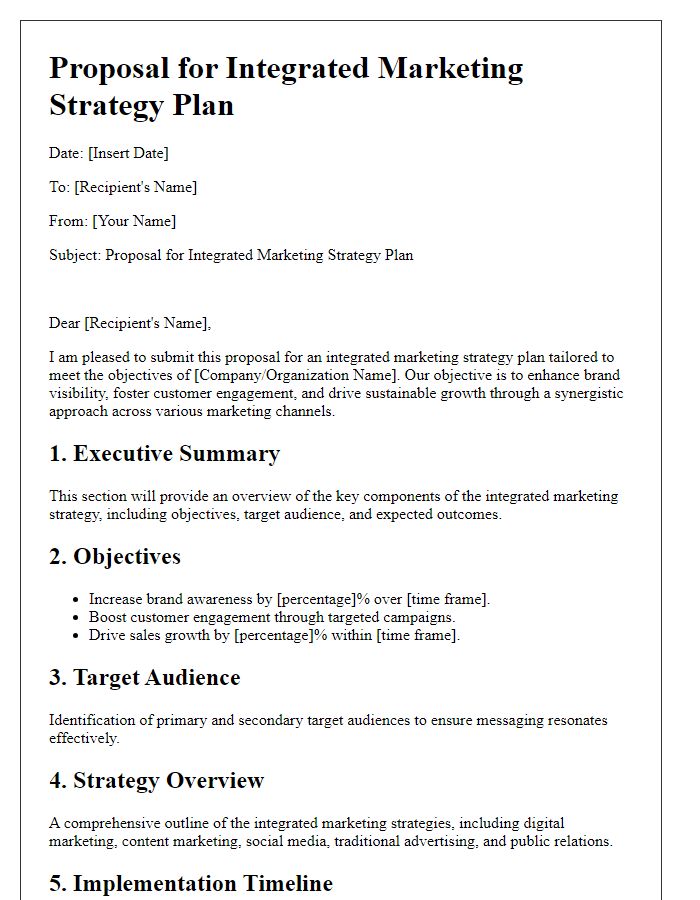

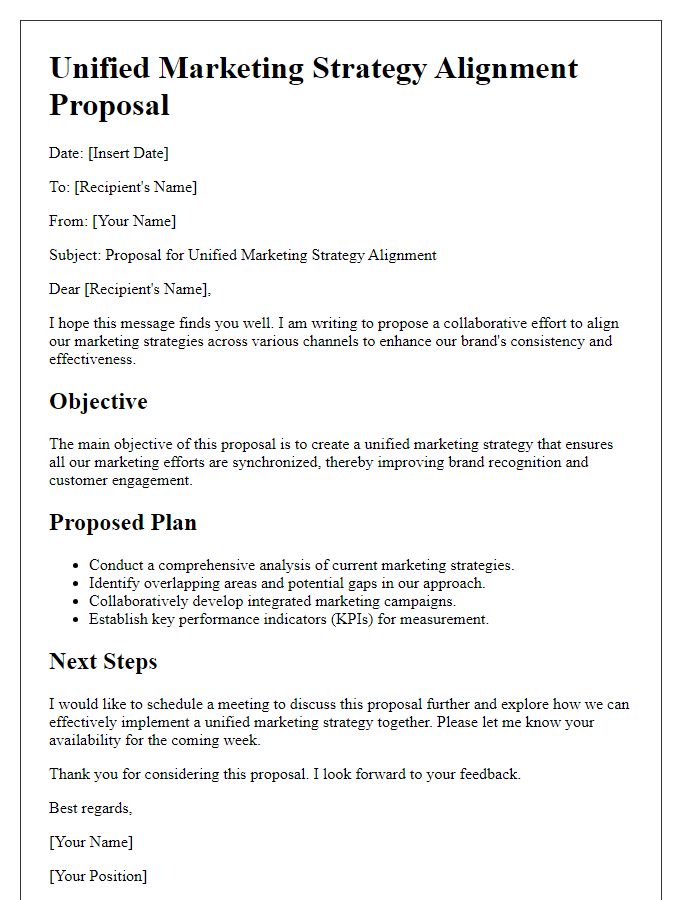
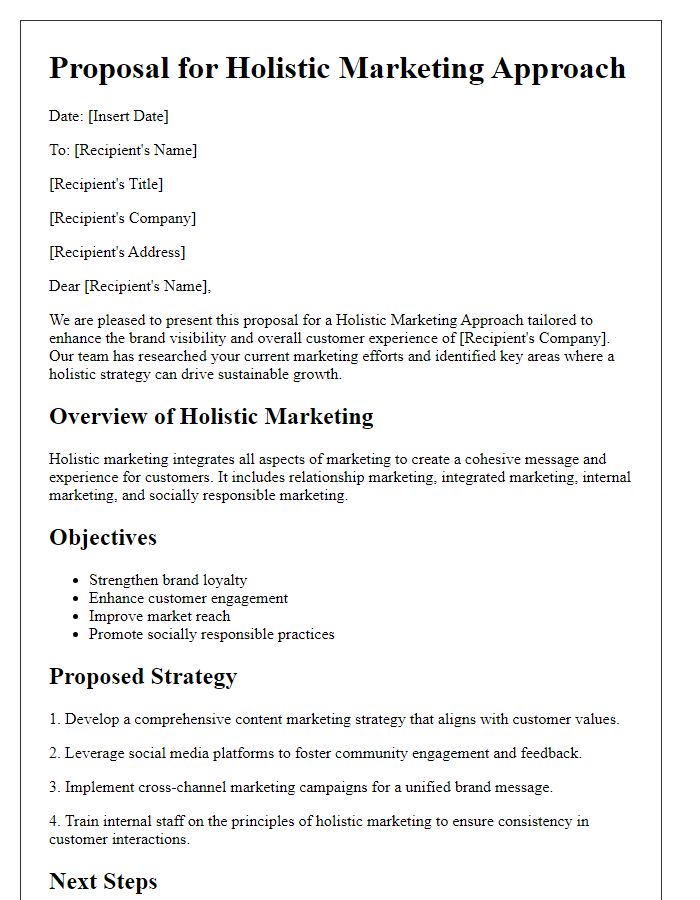
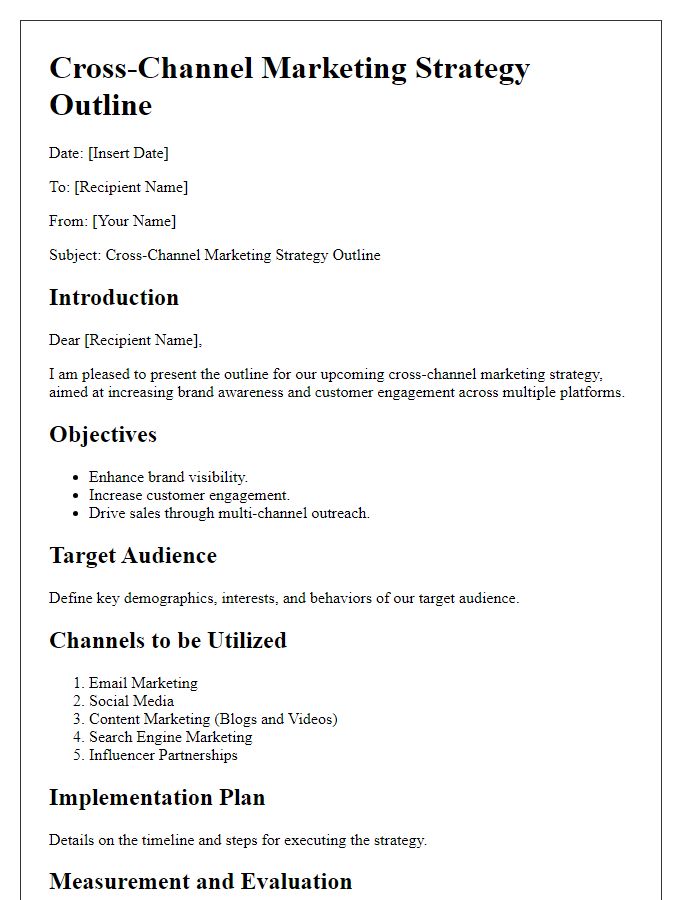
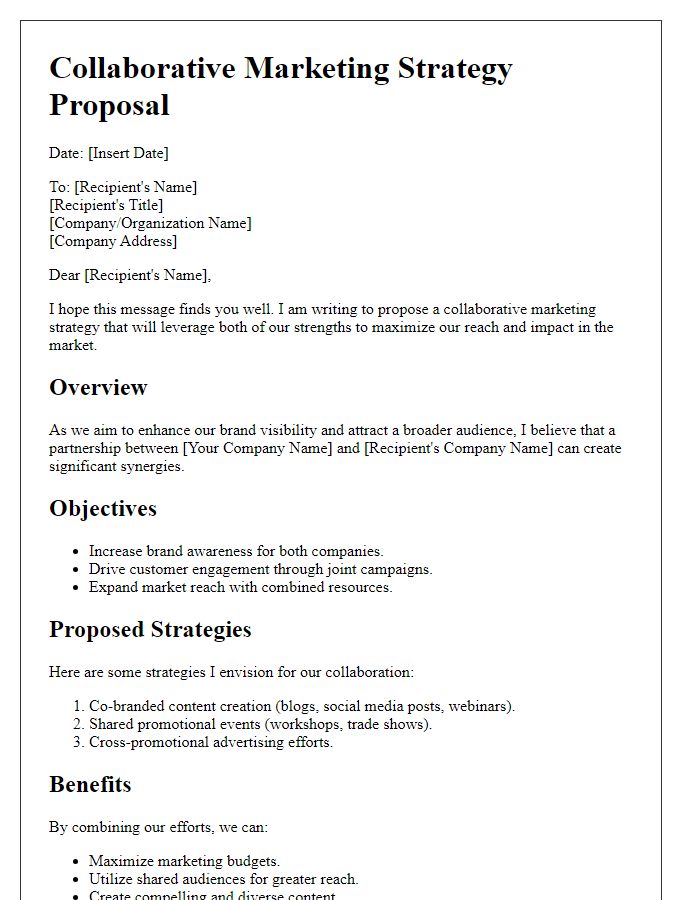
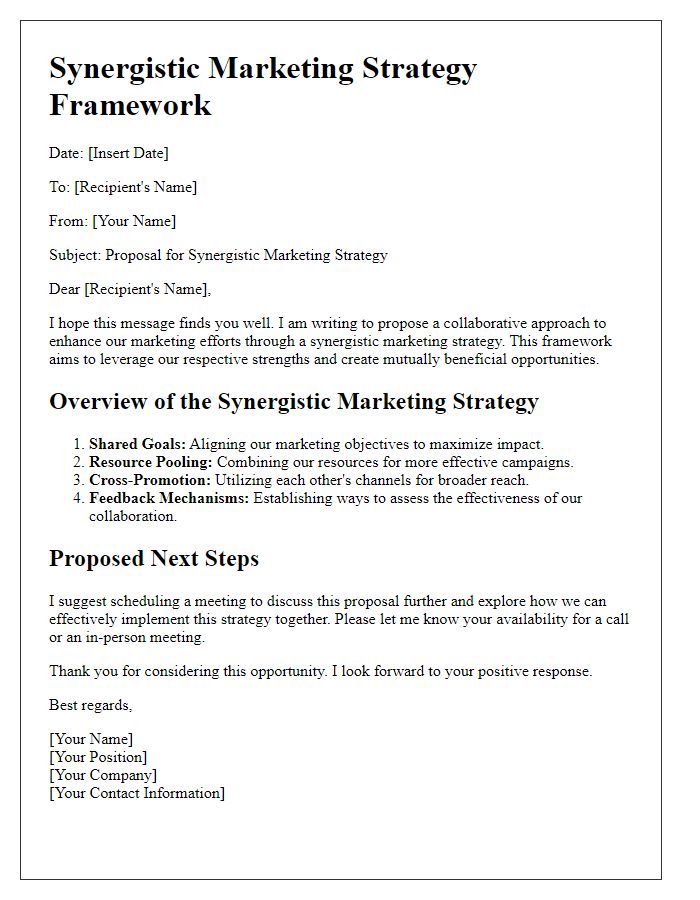
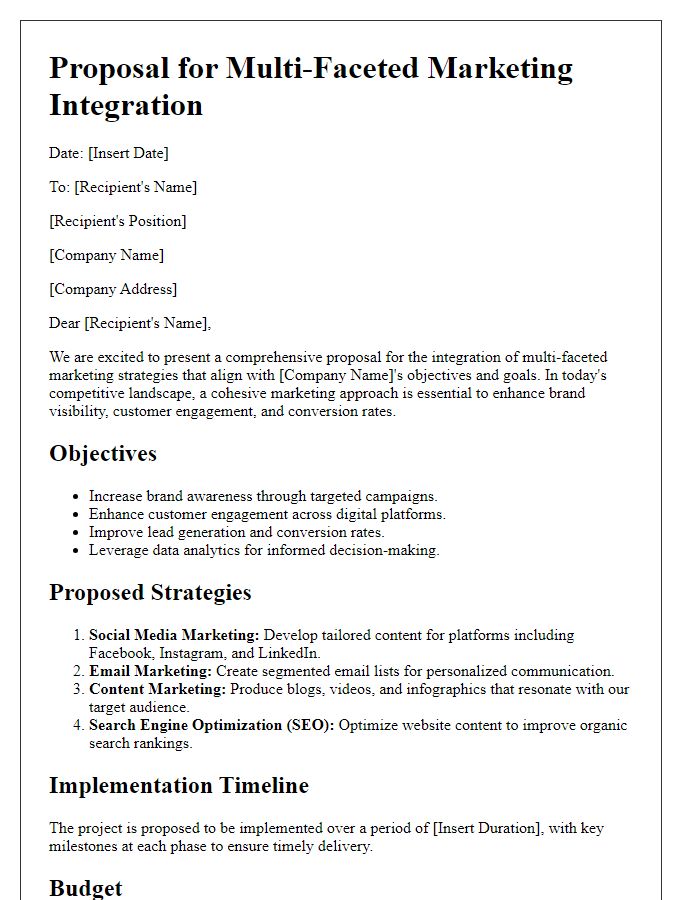

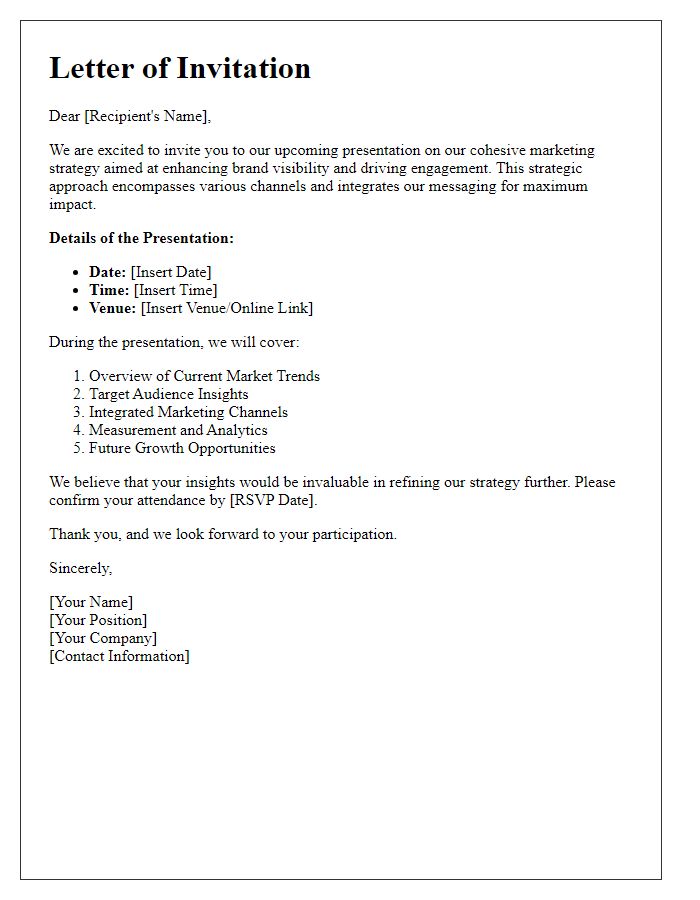





Comments